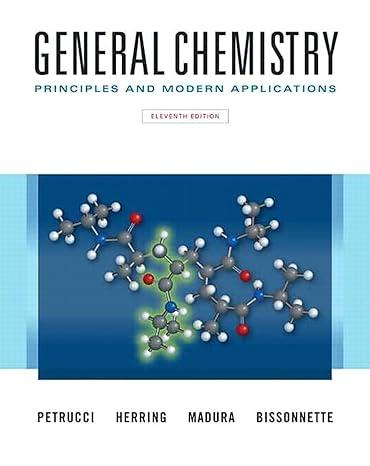(A) Copper(II) ion forms both an insoluble hydroxide and the complex ion [Cu(NH 3 ) 4 ]...
Question:
(A) Copper(II) ion forms both an insoluble hydroxide and the complex ion [Cu(NH3)4]2+. Write equations to represent the expected reaction when
(a) CuSO4(aq) and NaOH(aq) are mixed;
(b) An excess of NH3(aq) is added to the product of part (a); and
(c) An excess of HNO3(aq) is added to the product of part (b).
(B) Zinc(II) ion forms both an insoluble hydroxide and the complex ions [Zn(OH)4]2- and [Zn(NH3)4]2+ Write four equations to represent the reactions of
(a) NH3(aq) with ZnSO4(aq), followed by
(b) Enough HNO3(aq) to make the product of part (a) acidic;
(c) Enough NaOH(aq) to make the product of part (b) slightly basic;
(d) Enough NaOH(aq) to make the product of part (c) strongly basic.
Step by Step Answer:

General Chemistry Principles And Modern Applications
ISBN: 9780132931281
11th Edition
Authors: Ralph Petrucci, Jeffry Madura, F. Herring, Carey Bissonnette





